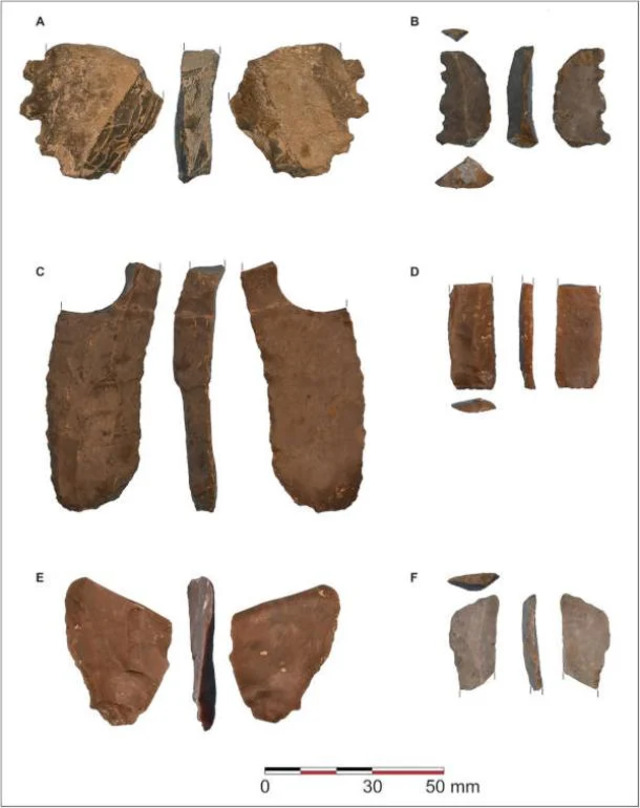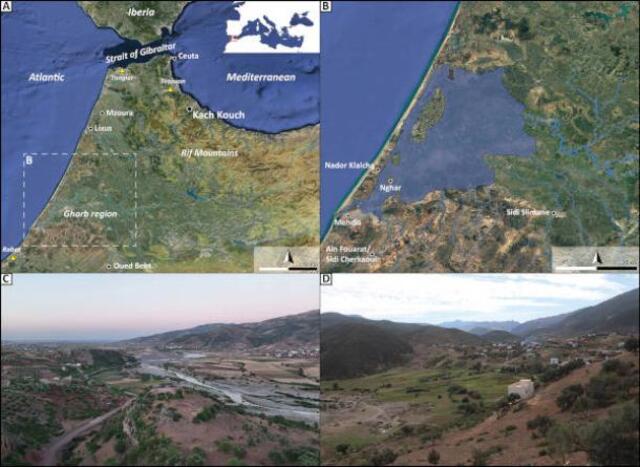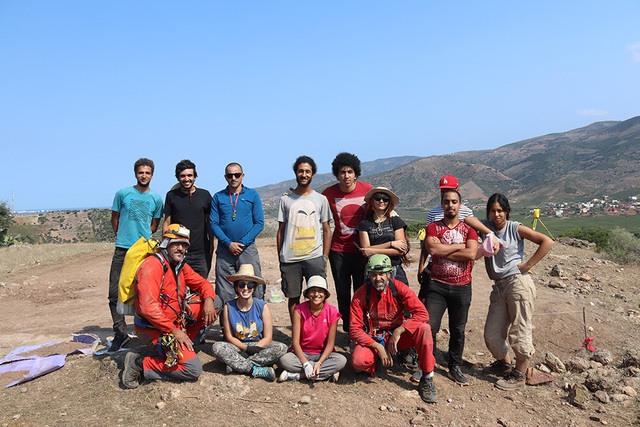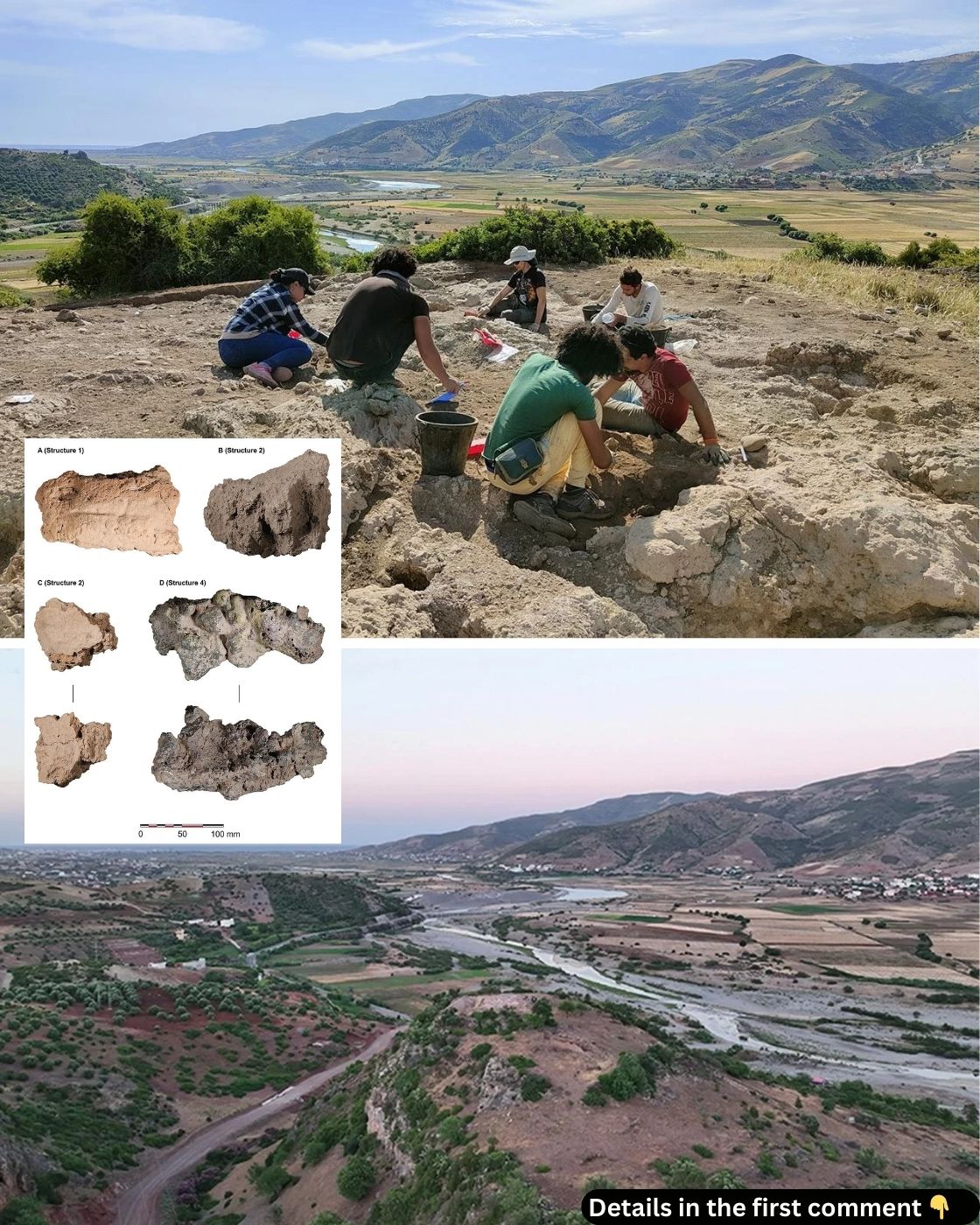In the shadow of the Mediterranean, a groundbreaking discovery in Morocco is rewriting the history of ancient North Africa. For centuries, the Maghreb region was seen as a mere footnote in the story of the Bronze Age, its contributions overlooked in favor of Mediterranean civilizations. However, the excavation of the Kach Kouch settlement, dating back to 2200-600 BC, is shattering these assumptions. This first-ever Bronze Age settlement in the Maghreb reveals a vibrant, interconnected society long before the Phoenician era, challenging our understanding of prehistoric North Africa.
Kach Kouch: The Site of Discovery
The Kach Kouch site, located in northwest Morocco near the Strait of Gibraltar, is a pivotal find in the quest to understand the prehistoric Maghreb. The site extends over an area of about one hectare, near the Lau River, and is situated just six miles from the coast. With its proximity to the Strait of Gibraltar, which connects the Mediterranean Sea to the Atlantic Ocean, Kach Kouch holds strategic importance in the context of ancient trade and cultural exchange. This region, which lies between two continents, offered access to both the Mediterranean and Atlantic trade routes, making it an essential location for understanding the historical connections between North Africa and Europe.

For many years, archaeologists were puzzled by the apparent absence of Bronze Age settlements in this region, especially considering the thriving civilizations to the north in Iberia. This void in archaeological evidence had long been considered a significant gap in understanding the prehistoric world of the Maghreb. However, the discovery of Kach Kouch has brought new clarity to this mysterious period in history, revealing a rich and dynamic cultural landscape that was deeply connected to the Mediterranean world.
Video
Watch Life in a Bronze Age Settlement to step back in time and discover what daily life was like in one of the earliest human societies. A fascinating glimpse into ancient history!
Phases of Occupation at Kach Kouch
The Kach Kouch excavation has revealed evidence of human occupation spanning several centuries, with distinct phases of activity that shed light on the evolution of the settlement.


First Phase: Early Bronze Age (2200-2000 BC)
The first phase of occupation at Kach Kouch, dating to around 2200-2000 BC, is represented by limited evidence, but it remains significant. This period marks the transition between the late Neolithic and the early Bronze Age. Archaeological findings from this time suggest that the settlement may have had some contact with neighboring Iberia, indicating that early humans in this region were not isolated but part of a broader network of cultural exchange. Though the material remains from this phase are sparse, they set the stage for the more vibrant periods that followed.
Second Phase: Middle Bronze Age (1300-900 BC)
The second phase, spanning from 1300 to 900 BC, marks a period of stability and growth for the settlement. During this time, a well-established agricultural community took root at Kach Kouch. The evidence of sedentary life is clear, as the settlement saw the construction of wooden mud-brick buildings, rock-cut silos, and grinding stones.
This agricultural economy was primarily based on the cultivation of barley and wheat, with livestock such as sheep, goats, and cattle supplementing the diet. This period represents the first definitive evidence of permanent settlement in the Maghreb, long before the Phoenician presence in the region. The thriving agricultural economy in Kach Kouch is indicative of the growing complexity of life in the Maghreb and suggests a society that was both self-sustaining and increasingly connected to the Mediterranean world.
Third Phase: Late Bronze Age to Early Iron Age (800-600 BC)
The third and final phase of occupation, extending from 800 to 600 BC, illustrates the adaptability and resilience of the people of Kach Kouch. This period saw the introduction of several cultural innovations from the eastern Mediterranean, such as wheel-thrown pottery, iron tools, and new architectural traditions using stone.
These innovations were likely the result of increased contact with Mediterranean civilizations, as the people of Kach Kouch actively participated in trade and cultural exchanges. The presence of foreign influences alongside local traditions highlights the dynamic and interconnected nature of the Maghreb during this time.
The Maghreb’s Role in Mediterranean Networks

The discovery of Kach Kouch provides compelling evidence that the Maghreb was not a peripheral region but an active participant in the Mediterranean’s complex networks of trade, culture, and technology. The settlement at Kach Kouch interacted with neighboring Iberia and the Levant, contributing to the broader flow of goods, ideas, and innovations across the Mediterranean world. The introduction of foreign cultural practices, such as the use of iron tools and new pottery techniques, demonstrates the extent to which the Maghreb was integrated into these transnational networks.
The region’s strategic location near the Strait of Gibraltar made it an ideal site for the exchange of goods and culture between Africa and Europe. The excavation of Kach Kouch has revealed a wealth of material culture, including pottery, tools, and evidence of agricultural practices, that speaks to a vibrant and interconnected society. This finding challenges the long-standing assumption that the Maghreb was isolated from the Mediterranean world and instead places it at the heart of ancient global networks.
Kach Kouch’s Place in Rewriting Maghreb History
The excavation of Kach Kouch is a significant step in rewriting the history of the Maghreb. For centuries, the region has been neglected in discussions of ancient Mediterranean civilizations, but the findings at Kach Kouch demonstrate that the Maghreb was an active and influential part of the prehistoric world. The settlement’s agricultural practices, cultural innovations, and connections to Mediterranean trade routes reveal a complex society that was far from isolated. This discovery forces historians to reconsider the historical narrative and recognize the Maghreb as a key player in the development of Mediterranean cultures.

Hamza Benattia Melgarejo, the lead researcher at the University of Barcelona, has emphasized the importance of this discovery in correcting the historical biases that have long shaped our understanding of the Maghreb. He argues that the findings at Kach Kouch are essential in recognizing the region’s contribution to Mediterranean history and in challenging outdated perceptions of the Maghreb as an “empty land.” By uncovering the rich history of the Maghreb, researchers are paving the way for a more inclusive and accurate understanding of the ancient world.
Future Implications: Further Discoveries Await
While the discovery of Kach Kouch is groundbreaking, the researchers believe that it is only the beginning. The site is unlikely to be the only settlement of its kind in the region, and future excavations could reveal even more about the prehistoric history of the Maghreb. The existence of Kach Kouch strongly suggests that there are many more settlements to be discovered in the surrounding areas, further complicating our understanding of ancient North Africa.
The researchers are hopeful that future work in the region will uncover more evidence of Bronze Age activity in the Maghreb and provide a more comprehensive picture of the complex and interconnected societies that once inhabited this part of the world.
Video
Watch Ancient Ruins of Tyre, Lebanon [Amazing Places 4K] to explore the breathtaking historical sites of Tyre, one of the oldest cities in the world. A must-see for history and travel enthusiasts!
Conclusion: Unveiling the Maghreb’s Ancient Past
The excavation of Kach Kouch is a milestone in the study of ancient North Africa. This discovery not only challenges the historical biases that have long shaped our understanding of the Maghreb but also opens the door to further research and exploration. The findings at Kach Kouch reveal a rich and dynamic history of human activity in the Maghreb, one that was far from isolated and deeply connected to the Mediterranean world. As archaeologists continue to uncover new evidence, the story of the Maghreb’s ancient past will continue to unfold, reshaping our understanding of the region’s role in the development of human civilization.



